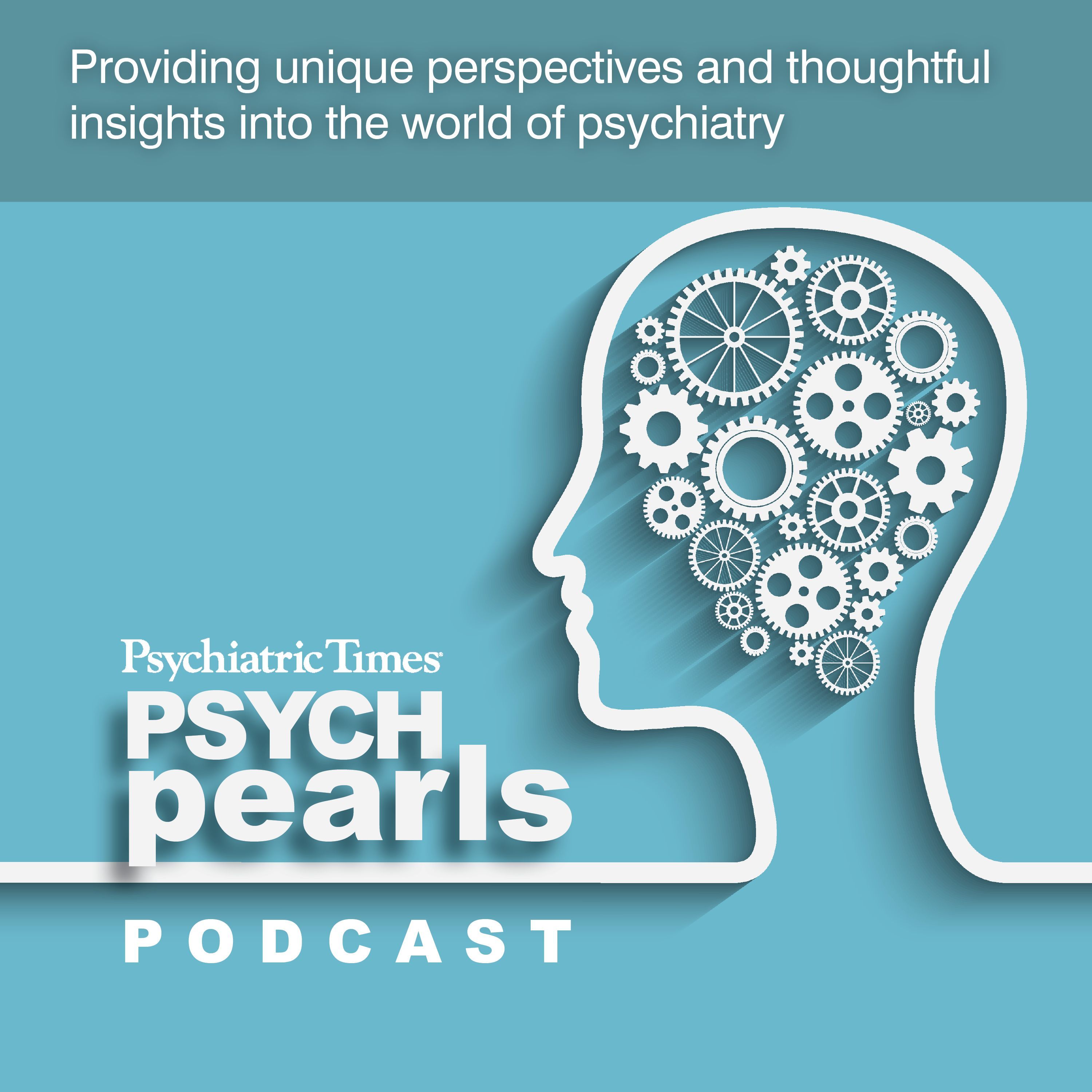Feature
Article
The Slow Road to Psychosis
Author(s):
Key Takeaways
- Prodromal symptoms of schizophrenia include cognitive deficits, mood changes, and subthreshold psychotic symptoms, often preceding full psychosis by weeks to years.
- Assessment tools like SIPS and CAARMS are crucial for identifying individuals at ultra-high risk of developing psychosis, aiding early intervention efforts.
Take a look at the differentiation between prodrome and attenuated psychosis, along with cognitive impairment associated with schizophrenia.
1STunningART/AdobeStock

TALES FROM THE CLINIC
-Series Editor Nidal Moukaddam, MD, PhD
In this installment of Tales From the Clinic: The Art of Psychiatry, we discuss prodromal symptoms of schizophrenia, and the differentiation between prodrome and attenuated psychosis. The relationship between such entities is not fully understood, and neither is the relationship with cognitive impairment associated with schizophrenia (CIAS), which is also a condition that is getting increased attention as new pharmacological targets emerge. Future developments may bring potential treatments for cognitive symptoms, whether in prodrome or after first psychotic break.
Case Study
“Debbie” is 15 year-old girl with no past psychiatric history, brought in by her parents for assessment. About a year ago, she started becoming more withdrawn, was not tending to her hygiene as much, and was no longer playing guitar, though she used to do so regularly. Her parents grew concerned when her grades declined. Their first thought was suspicion of drug use; they drug-tested her at home and she was positive for cannabis twice over the course of 8 months. They are sure she is not using anything currently.
Debbie is described as a sweet, easy-going child who had normal developmental milestones. She was “not the most sociable,” her mother adds, noting that when they watch videos of birthday parties and similar events, she seemed to be on the periphery of events and interacted with others only once prompted. She has not had medical issues, has never been hospitalized or had surgeries, and has no allergies. Recently, she has been wearing a hoodie with her head often covered.
On assessment, she denies symptoms of depression, and attributes the behaviors reported by her parents as due to “just life” and “feeling blah.” She does admit to trying cannabis a few times. When asked how she spends her time, she answers, “You know, I just chill.” When asked about her grades declining, she says, “Oh yes, my mother thinks I have ADHD. I can’t focus, I guess.” It is possible she has had auditory hallucinations, as she hints that the she heard ghosts: “We live in an old haunted house.” Her family history is significant for an uncle with schizophrenia.
Early-Onset Schizophrenia Concerns & Possible Prodrome
The prodrome for schizophrenia and other psychotic disorders involves a series of shifts or decline in diverse subjective and behavioral symptoms that come before the appearance of overt clinical psychotic symptoms.1 The interval before the emergence of first-break psychosis/first episode of schizophrenia is marked by subtle signs and symptoms, can span from weeks to years, and may be accompanied by concurrent symptoms that cloud diagnosis.
Commonly documented clinical findings of a schizophrenic prodrome include cognitive deficits (memory, attention, and concentration).2 These can involve disruptions in speed, verbal memory, social reasoning, and emotional processing. Prodromal symptoms encompass mood changes like anxiety, depression, mood swings, sleep issues, irritability, anger, and potential suicidal thoughts. Patients might also display obsessive-compulsive tendencies and dissociative symptomatology.
Up to 75% of patients with schizophrenia experience prodromal symptom stages. Subthreshold psychotic symptoms appear about a year before onset, and nonspecific anxiety and mood symptoms even earlier. However, not all progress to full psychotic disorders. Current estimates indicate that about 1 in 4 high-risk patients transition to schizophrenia, meriting intervention. Research indicates that only 20% to 40% meeting ultra-high risk (UHR) criteria convert to psychosis within 2 to 4 years. Studies in Australia and the United States followed individuals with "subthreshold" psychotic symptoms and functional decline, along with a genetic risk for schizophrenia, over time; while earlier studies noted a 40% to 50% conversion rate to psychosis within 1 to 2 years, researchers in North America noted a more modest transition rate. In Australia, 1-year transition rates have steadily dropped over time: 50% in 1995, 32% in 1997, 21% in 1992, and 12% in 2000.2
When comparing a group of 12 to 18 year-olds with schizophrenia, a group with ADHD,3 and a control group for 25 years, the following was found: the cognitive deficits associated with psychosis may superficially resemble ADHD, but have a different longitudinal trajectory. In a comparison of controls, adolescents with ADHD, and adolescents with schizophrenia, those with schizophrenia consistently showed poorer functioning, suggesting prodromal deficits persist and may worsen through the course of the disease. At 2 subsequent points, 13 years (T2) and 25 years (T3) later, these participants underwent cognitive reassessment. The early-onset schizophrenia group exhibited a noteworthy decline or lack of progress in cognitive function from the initial assessment (T1) to the 13-year mark (T2), when compared with the healthy control group; then the early-onset schizophrenia group had some improvement, indicating a relatively stable cognitive performance over the 25-year period. Conversely, the group with ADHD showed improvement comparable or in line with the control group’s development from T1 to T2, with continued improvement from T2 to T3. Across all 3 time points, individuals in the early-onset schizophrenia group consistently performed more poorly on the cognitive composite score in comparison with both the control and ADHD groups. These findings were thought to support a neurodevelopmental cognitive decline for the schizophrenia group starting in adolescence. In contrast, the ADHD group displayed more consistent cognitive maturation, which supports the idea of ADHD being linked to delayed maturation.
In our case study, Debbie exhibited academic decline, withdrawal from social interactions, sadness, and auditory hallucinations. These can be viewed as prodromal symptoms, given her young age and the described alterations in her behavior and cognition.
Assessment Measures for Schizophrenia Prodrome
Those include Structured Interview for Psychosis-risk Syndromes (SIPS)/Scale of Prodromal Symptoms SOPS and Comprehensive Assessment of At-Risk Mental States (CAARMS).4,5 The SIPS is a semi-structured interview designed to be conducted by trained clinicians. This interview covers a biopsychosocial history and evaluates 4 main symptom dimensions on the SOPS: positive, negative, disorganized, and general/affective symptoms. The SIPS/SOPS identifies 3 types of prodromal syndromes:
- Attenuated positive symptom prodromal syndrome (APS): Characterized by attenuated positive psychotic symptoms occurring at least once weekly, emerging or worsening within the past year. These symptoms encompass unusual thought content/delusional ideas, suspiciousness/persecutory ideas, grandiosity, perceptual abnormalities/distortions, and conceptual disorganization.
- Brief intermittent psychosis prodromal syndrome (BIPS): Involves brief and intermittent fully psychotic symptoms that have recently begun.
- Genetic risk and deterioration prodromal syndrome (GRDS): In this syndrome, there's either a family history of a psychotic disorder in a first-degree relative along with a decline of at least 30% on the Global Assesment of Functioning (GAF) scale within the past year, or the individual meets criteria for schizotypal personality disorder and has experienced a 30% decline on the GAF in the past year.
Following the SIPS assessment in a sample of 141 adolescents, results showed that 44% of participants were diagnosed with an UHR syndrome, 42% were diagnosed with full psychosis, and 13% did not receive a diagnosis within the psychotic-spectrum. Among the UHR subjects, 95% met APS criteria and 5% met BIPS criteria. One GRDS subject was excluded from analysis, as the Prodromal Questionnaire – Brief version (PQ-B) aims to capture symptomatic at-risk syndromes.
The CAARMS has been developed to identify the prodrome of schizophrenia. It is meant to: (1) evaluate psychopathology that may indicate the imminent onset of a first-episode psychotic disorder, and (2) determine whether an individual meets criteria for being at UHR for developing a first psychotic disorder.
The UHR group demonstrated notably higher CAARMS scores. The control group had significantly lower CAARMS scores compared with the UHR group. The UHR criteria evaluated using CAARMS aligned with those established by existing methods. Among individuals without psychosis seeking help, those identified as CAARMS-positive faced a significantly higher risk of developing a psychotic disorder in contrast with CAARMS-negative individuals. The CAARMS showed strong reliability.
Prodrome, CIAS, or a Separate Psychotic Disorder?
The DSM-5 has included APS in Section III under the category of "conditions for further study." The DSM-5 task force concluded that there was not enough evidence to justify incorporating APS as an official mental disorder diagnosis in Section II. The guidelines state, "The proposed criteria (APS) are not intended for clinical use; only the criteria sets and disorders in Section II of DSM-5 are officially recognized and can be used for clinical purposes.6 CIAS is not in the DSM-5 yet but is the focus of clinical interest.
The suggested diagnostic criteria for APS in DSM-5 are as follows:
1. At least 1 of the following symptoms is present in a less intense form, with intact reality testing, and is severe or frequent enough to necessitate clinical attention:
- Delusions
- Hallucinations
- Disorganized speech
2. The symptom(s) should have been present at least once a week in the past month.
3. The symptom(s) must have emerged or worsened within the past year.
4. The symptom(s) is distressing and disabling to the individual to an extent that clinical attention is required.
5. The symptom(s) cannot be better accounted for by another mental disorder, including depressive or bipolar disorder with psychotic features, and cannot be attributed to the physiological effects of substances or other medical conditions.
It is important to note that the criteria for any psychotic disorder have never been met based on these guidelines. Psychosis risk is a complicated and sometimes difficult to diagnose illness, particularly in its prodromal phases. The PQ-B is thought to be a time-efficient, efficient, approachable method for early detection and intervention of patients at risk of developing psychotic illnesses, in line with the performance of interview-based diagnoses.7
Treatment Protocols
Detecting individuals in the prodromal stage of schizophrenia before their first episode of psychosis offers a chance for early interventions that could potentially prevent the onset of full-blown psychosis. Recent efforts to establish diagnostic criteria for "at risk" or "prodromal syndrome" have succeeded in identifying individuals with a high risk of developing psychosis. Initial research suggests that both pharmacological and psychotherapeutic interventions might reduce the risk of psychosis in such individuals. However, due to the need for more information, existing treatment guidelines recommend vigilant monitoring and therapeutic measures that address identified issues. These measures include supportive or cognitive therapies to mitigate the functional impact of present symptoms, family interventions to alleviate family distress and enhance coping, and school interventions to lower the risk of academic struggles.
While pharmacological intervention targeting prodromal symptoms is not currently advised due to an unclear risk-benefit balance, ongoing research is needed to establish more definitive recommendations. Besides antipsychotic drugs, exploring neuroprotective pharmacological agents is important. Antioxidant drugs targeting N-methyl-D-aspartate glutamate receptors or gamma-aminobutyric acid receptors show potential as preventive treatments for psychotic disorders and require further investigation.
In dealing with social withdrawal and other problems, schools can adopt a number of strategies to enhance school climate. These initiatives have demonstrated success in reducing the necessity for disciplinary actions, lowering behavior issues, and enhancing school safety. Among these methods, response to intervention and effective behavioral supports, also known as school-wide positive behavior support, stand out.3,8,9
Concluding Thoughts
Interventions for such patients should consider their unique situation including comorbidities and family environment, and family history. Interdisciplinary cooperation and early intervention are crucial. The goal is to meet mental health needs in both educational and community settings. This case highlights the importance of understanding and addressing mental health challenges in young individuals and tailoring interventions accordingly. System-level efforts at training educators and staff to recognize and manage mental health concerns would help with early out of home detection.
Dr Hijazi is a graduate of the American University of Beirut and currently pursuing research in psychiatry. Dr Moukaddam is a professor of psychiatry at Baylor College of Medicine, Department of Psychiatry, and the Director of Outpatient Psychiatry at Harris Health System. She also serves on the Psychiatric Times Editorial Board.
References
1. Salvatore P, Baldessarinit RJ, Khalsa HK, Tohen M. Prodromal features in first-psychotic episodes of major affective and schizoaffective disorders. J Affect Disord. 2021;295:1251-1258.
2. Yung AR, Yuen HP, McGorry PD, et al. Mapping the onset of psychosis: the comprehensive assessment of at-risk mental states. Aust N Z J Psychiatry. 2005;39,(11-12):964-971.
3. Øie MG, Sundet K, Haug E, et al. Cognitive performance in early-onset schizophrenia and attention-deficit/hyperactivity disorder: a 25-year follow-up study. Front Psychol. 2020;11:606365.
4. Woods SW, et al. Development of the PSYCHS: Positive SYmptoms and Diagnostic Criteria for the CAARMS Harmonized with the SIPS. Early Interv Psychiatry. 2024;18(4):255-272.
5. Kline E, Schiffman J. Psychosis risk screening: a systematic review. Schizophr Res. 2014;158(1-3):11-18.
6. Brucato G, Masucci MD, Arndt LY, et al. Baseline demographics, clinical features and predictors of conversion among 200 individuals in a longitudinal prospective psychosis-risk cohort. Psychol Med. 2017;47(11):1923-1935.
7. Loewy RL, Pearson R, Vinogradov S, et al. Psychosis risk screening with the Prodromal Questionnaire--brief version (PQ-B). Schizophr Res. 2011;129(1):42-46.
8. Eiraldi RB, Mautone JA, Power TJ. Strategies for implementing evidence-based psychosocial interventions for children with attention-deficit/hyperactivity disorder. Child Adolesc Psychiatr Clin N Am. 2012;21(1):145-159.
9. Weiss A, Chaudhry S, Marhefka A, Khunkhun V. Early intervention in the treatment of psychosis. Child Adolesc Psychiatr Clin N Am. 2024;33(4):645-658.





